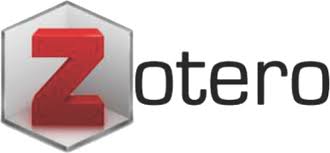IMPLEMENTASI METODE SAVI UNTUK MENINGKATKAN MOTIVASI BELAJAR SISWA MOJOAGUNG JOMBANG
DOI:
https://doi.org/10.32764/dinamika.v5i3.844Keywords:
Application of the SAVI Method, Increasing learning MotivationAbstract
Quality learning processes involve many things, one of which is the method or model applied by the teacher. If a teacher conveys varied and stimulating learning, students will be more interested in listening to the material presented. Conversely, if the teacher only teaches with conventional methods, namely lectures, students will be bored and not interested in listening to the material being taught. In this case the role of the learning method is very important to increase students' learning motivation, especially in the XI IPA class students.Assulaimaniyah whose application of learning is still a conventional method. They need varied learning not monotonous in order to support maximum learning outcomes, as well as the Application of SAVI Learning Methods to Increase Learning Motivation Sisawa Class XI Science MA.Assulaimaniyah Mojoagung Jombang. Based on this background, this study aims to conduct and determine the application of SAVI learning methods to improve student learning motivation when applied in the XI IPA MA class. Assulaimaniyah. Type of qualitative research with methods of collecting data on observation, interviews, documentation and library data. Data Analysis Techniques Data collection as well as data reduction, data presentation, verification and conclusions. The results showed that when the application of the SAVI method was applied, students who were previously lacking in enthusiasm in receiving learning were more enthusiastic and active in participating in these varied learning methods, so students could learn more optimally in learning. Supporting factors, positive support and encouragement from homeroom teacher and researcher motivation. Inhibiting factors Factors of oneself, such as lack of enthusiasm and enthusiasm that arise from them selves.
Downloads
References
A’yuni Qurrota Diyah. 2015. Efektivitas Penerapan Kolaborasi Pendekatan SAVI (Somatic Auditory Visualization Intelektually) Dan Pendektan Talking Stick Terhadap Hasil Belajar Peserta Didik Kelas VII Pada MateriSegiempat Di MTs. NU Hasyim Asy’Ari . Skripsi, UIN Walisongo Semarang.
Fitri, Irsa Ning dkk. “Efektivitas Metode Pembelajaran Snowball Throwing Pada Mata Pelajaran Al-Qur’an Hadist untuk Meningkatkan Minat Belajar Siswa Kelas XI di MAN 1 Jombangâ€, dalam Jurnal At-Tuhfah: Jurnal Studi Keislaman. Vol. 8, No. 2, 2019.
Hakim Dhikrul. 2016. Psikologi Belajar. yogyakarta: Erhaka Utama.
Irfiana Rohmatin, wawancara pada tanggal 11 februari 2019 (wali kelas XI IPA MA Assulaimaniyah Mojoagung Jombang).
Emi Lilawati dan Hidayatur Rohmah. Tanggapan Siswa SMA Kelas X Terhadap Pembelajaran Fiqih Berbasis Murder (Studi kasus di SMA Darul Ulum 1 Unggulan BPPT Jombang), Prosiding Seminar Nasional Multidisiplin, 26 Oktober 2019, Vol 2 No 1, 2019.
Lisa Agustina dan Ghulam Hamdu. 2011, “Pengaruh Motivasi Selajar Siswa Terhadap prestasi Belajar IPA di Sekolah Dasarâ€. Jurnal Penelitian Pendidikan, Vol.12, No. 1.
Mirnawati Binti Lilik. 2017. “ Penerapan Model Pembelajaran SAVI untuk Meningkatkan Kemampuan Belajar Mahasiswa PGSD FIKIP Universitas Muhamadiyah Surabaya’’ jurnal Pendidikan dan Sekolah Dasar. Vol. 1.
J Moleong, Lexi. 2002. Metodologi Penelitian Kualitatif. Bandung: PT Remaja Rosda Karya.c
Nazir Moh.2014. Metode Penelitian . Surabaya: Ghalia Indonesia.
Sugiyono. 2016. Metode Penelitian Pendidikan . Bandung: ALFABETA cv.
Sunyoto Danang. 2013. Metode dan Instrumen Penelitian. Yogyakarta: PT Buku Seru.
Sukardi. 2013. Metode Penelitian Tindakan Kelas . Jakarta: Bumi Aksara
Susilo Joko M. 2006. Gaya Belajar Menjdikan Makin Pintar. Yogyakarta: Pinus.
Sumadinata Syaodih Nana. 2016. Metode Penelitian Pendidikan. Bandung: PT Remaja Rosdakarya Offset.
Suyatno. 2009. menjelajah pembelajaran inovatif. Sidoarjo: Masmedia Buana Pustaka.
Suryabrata Sumadi. 2014. Metodologi Penelitian. Jakarta: Rajawali Pers.
Thofuru. 2008. Menjadi Guru Inisiator. Semarang: RaSAIL, Media Group.
Downloads
Published
How to Cite
Issue
Section
License
Seluruh materi yang terdapat dalam situs ini dilindungi oleh undang-undang. Dilarang mengutip sebagian atau seluruh isi situs web ini untuk keperluan komersil tanpa persetujuan dewan penyunting jurnal ini.
Apabila anda menemukan satu atau beberapa artikel yang terdapat dalam Dinamika yang melanggar atau berpotensi melanggar hak cipta yang anda miliki, silahkan laporkan kepada kami, melalui email pada Priciple Contact.
Aspek legal formal terhadap akses setiap informasi dan artikel yang tercantum dalam situs jurnal ini mengacu pada ketentuan lisensi Creative Commons Atribusi-ShareAlike (CC BY-SA).
Semua Informasi yang terdapat di Dinamika bersifat akademik. Dinamika tidak bertanggung jawab terhadap kerugian yang terjadi karena penyalah gunaan informasi dari situs ini.

Dinamika by http://ejournal.unwaha.ac.id/index.php/dinamika is licensed under a Creative Commons Attribution-ShareAlike 4.0 International License.








